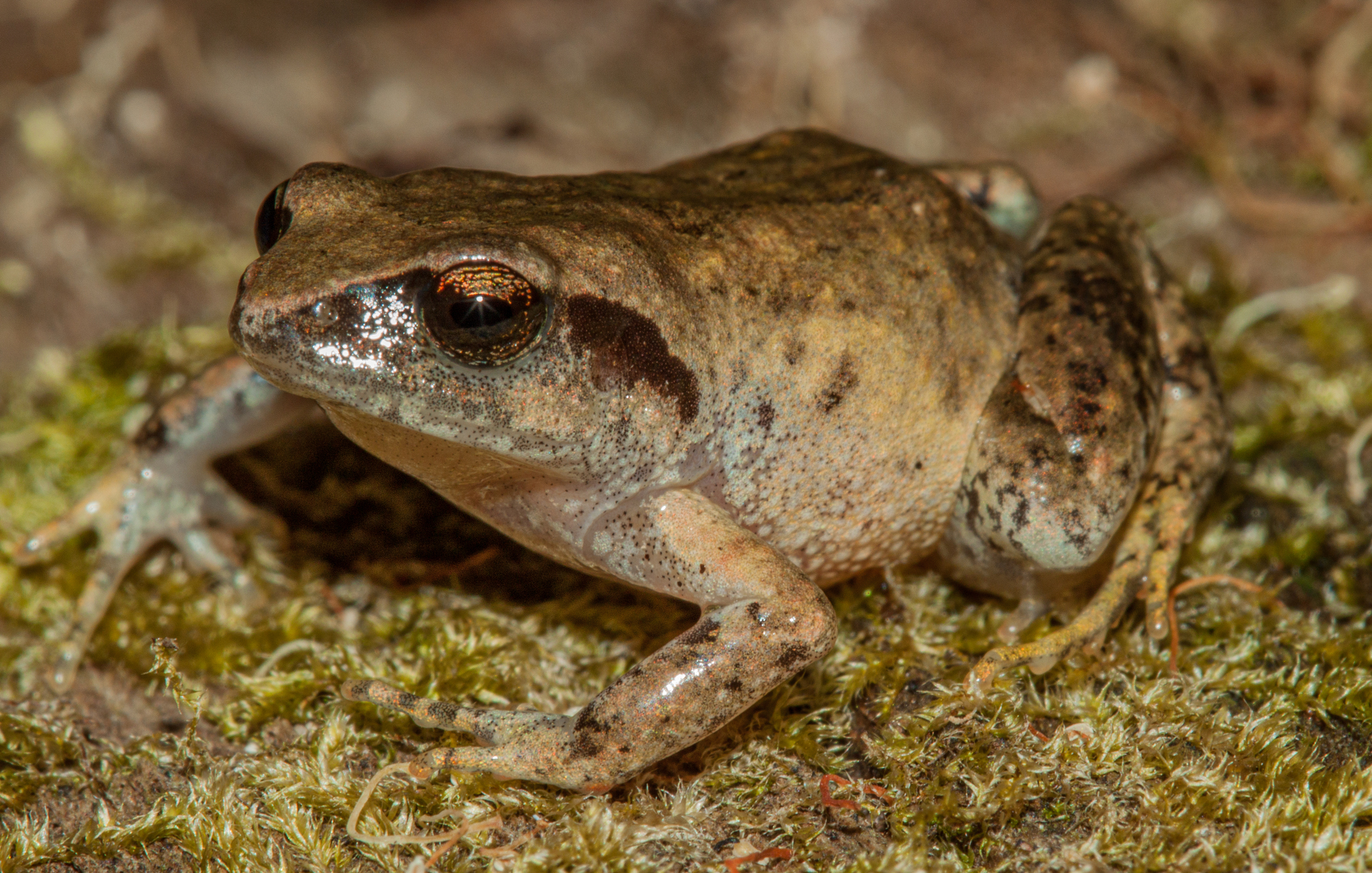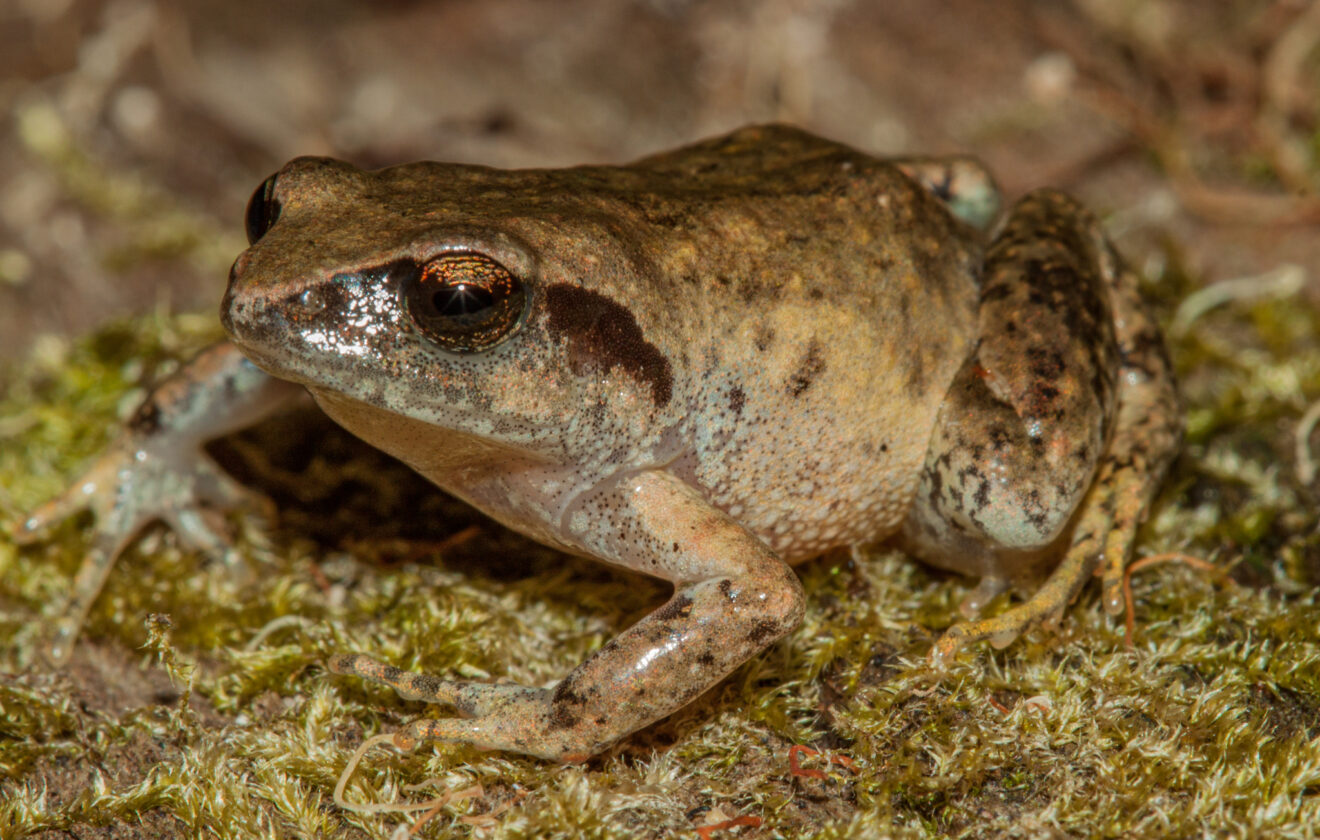- Meet Arthroleptis wahlbergii: The Secretive Forest Floor Guardian
- Taxonomy and Classification: Placing Arthroleptis wahlbergii in Context
- Natural Habitat: Life Among the Leaf Litter
- Physical Characteristics: Subtle Beauty in Miniature
- Behavior and Life Cycle: Secretive Yet Fascinating Lives
- Ecological Role: Guardians of Forest Equilibrium
- Threats and Conservation: The Struggle for Survival in Changing Forests
- Cultural and Scientific Significance: Small Frog, Big Role
- Conclusion: Protecting the Smallest Forest Guardians
Meet Arthroleptis wahlbergii: The Secretive Forest Floor Guardian#
In the hidden tapestry of forest leaves and moist soil, elusive creatures dance silently, performing nature’s quiet symphony beneath our feet. Among these unsung forest guardians is the curious little frog, Arthroleptis wahlbergii. Known by its common name, Wahlberg’s squeaker, this charming yet cryptic little amphibian is often felt more than seen, hiding in plain sight on Africa’s lush tropical forest floor.
Known for its subtle yet distinct call—a gentle squeaking reminiscent of a softly creaking wooden door—Wahlberg’s squeaker belongs to a fascinating lineage within amphibian biodiversity. Its modest size may mask its ecological importance, but beneath its delicate exterior lies a species vital to the harmony of its rainforest ecosystem.
As we journey deeper into the rainforest, carefully lifting a damp leaf or two, let us uncover the hidden world of Arthroleptis wahlbergii, exploring its remarkable adaptations, intriguing behaviors, conservation significance, and the delicate balance it helps maintain between the earth and life itself.
Taxonomy and Classification: Placing Arthroleptis wahlbergii in Context#
Every species tells a story of lineage and evolution, and Wahlberg’s squeaker is no exception. Scientifically classified as Arthroleptis wahlbergii, it belongs to the family Arthroleptidae, a remarkably diverse group of frogs often referred to in general terms as “squeakers” or “chirping frogs.”
Within the genus Arthroleptis, Wahlberg’s squeaker shares close kinship with numerous other small-bodied frogs adapted to ground-dwelling lifestyles across sub-Saharan Africa. The genus itself is characterized by direct development—a fascinating process where eggs hatch directly into miniature froglets, bypassing the tadpole phase entirely. This adaptation allows Arthroleptis wahlbergii to thrive even without standing water nearby, giving it a unique ecological edge in its tropical forest domain.
Natural Habitat: Life Among the Leaf Litter#
Wahlberg’s squeaker graces parts of Eastern and Southern Africa, inhabiting regions from eastern Kenya and Tanzania down through Malawi, Mozambique, Zimbabwe, Eswatini (formerly Swaziland), and into the eastern subtropical forests of South Africa. Within these expansive landscapes, it resides predominantly in humid forests, densely wooded savannas, and moist subtropical woodlands, thriving especially in shaded, leaf-litter-rich environments.
An Ecosystem Hidden Underfoot#
If you were to quietly wander through their habitat, gently parting damp forest litter with careful fingertips, you might stumble upon Wahlberg’s squeaker resting secretly under decomposing leaves, fallen wood, or shaded logs. These microhabitats offer the constant humidity, protection, and abundant food resources necessary for survival. Here, microclimates shield the frog from harsh weather extremes, predators’ keen eyes, and competition from larger amphibians.
In its shady underworld, Wahlberg’s squeaker expertly negotiates ecological niches; the leaf litter habitat, though humble, is teeming with countless invertebrates—springtails, ants, termites, beetles, and small spiders—upon which it readily feeds. In these moist, secretive spaces, life eddies gently around the squeaker, delicately balanced yet surprisingly abundant.
Physical Characteristics: Subtle Beauty in Miniature#
A closer examination of Wahlberg’s squeaker reveals a charm all its own. Adults of this species rarely exceed 3 centimeters in length—roughly the size of a human fingertip. Like tiny forest ghosts, their cryptic coloration blends seamlessly with their leaf-litter home, exhibiting shades ranging from various warm browns to dappled greys and subtle ochres, punctuated with small, scattered dark markings.
Masters of Camouflage#
This modest coloration is not merely coincidence but a finely honed ninja-like mastery in adaptation. Consider the perspective of a predator—a bird scanning the forest floor or a hungry shrew snuffling through soil. The mottled patterning and earthy hues of Wahlberg’s squeaker render it practically invisible, helping it evade predation, blend into its environment, and hunt unnoticed.
A Unique Physique Tailored for Survival#
While possessing petite proportions, this little amphibian boasts disproportionately robust hind limbs, adapted for swift, agile hops and fast darting movements. These powerful limbs, coupled with sensitive auditory systems, make it exceptionally adept at avoiding dangers and capturing prey in sudden, decisive lunges. Its smooth, slightly moist skin, strategically structured to prevent dehydration, allows it to flourish beneath the thick forest canopy.
Behavior and Life Cycle: Secretive Yet Fascinating Lives#
Living largely concealed technology under fallen foliage, Wahlberg’s squeaker exhibits fascinating behavior patterns, many of which remain mystifying even to keen herpetologists.
Feeding Strategy: Tiny Predators in Miniature Jungles#
Arthroleptis wahlbergii is a stealthy hunter, adept at capturing tiny prey with precision strikes. It primarily feeds on small arthropods such as ants, springtails, termites, and even miniature spiders and mites. By consuming these tiny insects, Wahlberg’s squeaker effectively regulates insect populations on the forest floor, a subtle yet critical ecological niche.
Mating and Reproductive Habits#
True to squeaker tradition, males emit soft, repetitive chirping calls from concealed positions in the leaf litter or logs, communicating their availability and quality to receptive females. Rainy seasons mark peak breeding periods, during which males vociferously assert territorial rights and seek mates.
A particularly intriguing aspect of their reproductive biology is direct development—the laying of eggs within moist leaf litter or under logs without reliance on a water body. Eggs hatch directly into miniature versions of adults, completely bypassing an aquatic tadpole phase. This adaptation allows the species to breed efficiently in environments absent permanent water sources, dramatically broadening available habitats.
Ecological Role: Guardians of Forest Equilibrium#
As diminutive as Wahlberg’s squeaker may be, its value as a biological regulator cannot be overstated. It acts simultaneously as predator and prey within its tightly interwoven jungle ecosystem. By consuming insects that break down organic matter, it contributes to the stability and fertility of its forest home. Conversely, it serves as nourishment for larger predators like birds, snakes, small mammals, and even larger amphibians, fitting neatly into the delicate balance of its ecosystem’s food chain. Furthermore, amphibians like these are considered indicators of environmental health due to their permeable skins and sensitivity to pollution or environmental disturbances.
Threats and Conservation: The Struggle for Survival in Changing Forests#
Despite their adaptability, Wahlberg’s squeakers are not immune to human-driven changes. Their habitats, though obscured beneath our feet, are vulnerable to deforestation, agricultural encroachment, pollution, and climate shifts affecting rainfall patterns and humidity levels.
Currently, Wahlberg’s squeaker is classified as “Least Concern” by the IUCN Red List, but their cryptic nature and small size mean potential population declines might be overlooked. Attentive monitoring of their numbers remains important to ensure unnoticed declines do not escalate into conservation crises.
Cultural and Scientific Significance: Small Frog, Big Role#
While not widely recognized in human culture, amphibians like Wahlberg’s squeaker hold symbolic significance as indicators of ecological harmony and ecosystem health within scientific and conservation circles. Additionally, studies on their direct development offer insights into evolution, adaptation, and amphibian biology, illuminating broader ecological questions about biodiversity and resilience in the face of environmental change.
Conclusion: Protecting the Smallest Forest Guardians#
Arthroleptis wahlbergii—the unassuming guardian of the forest floor—is a compelling reminder that conservation should never discount any species by size or visibility. Beneath its diminutive, concealed existence pulses a vital story of interconnectedness, adaptation, resilience, and ecological balance.
Let’s champion the microcosmos beneath us, acknowledging Wahlberg’s squeaker not merely as a tiny frog but as a vital participant in Earth’s grand ecological orchestra. Support local conservation efforts, explore the beauty hidden in the leaf litter, and protect the precious forest habitats sheltering these enchanting guardians beneath our very footsteps.


















